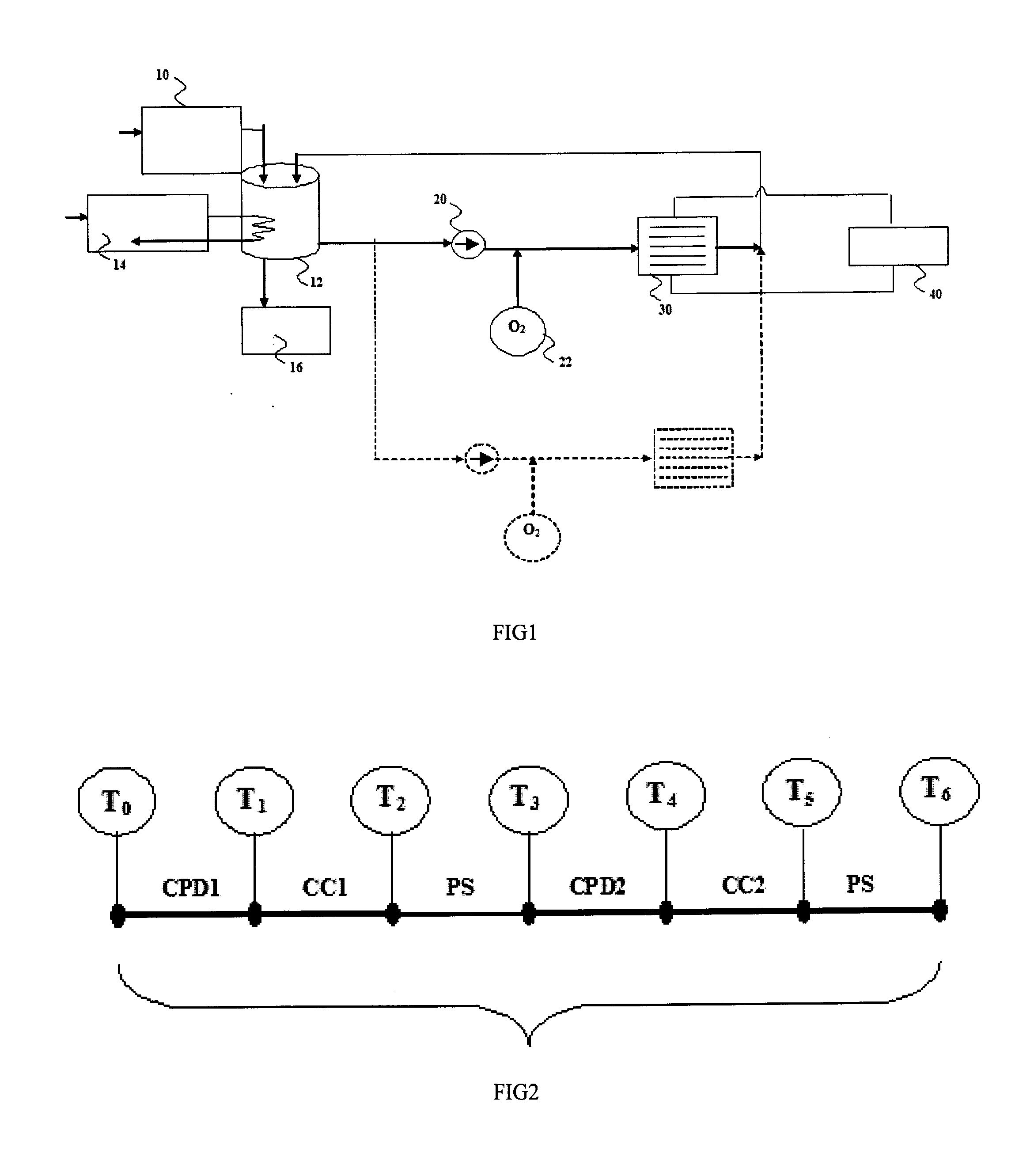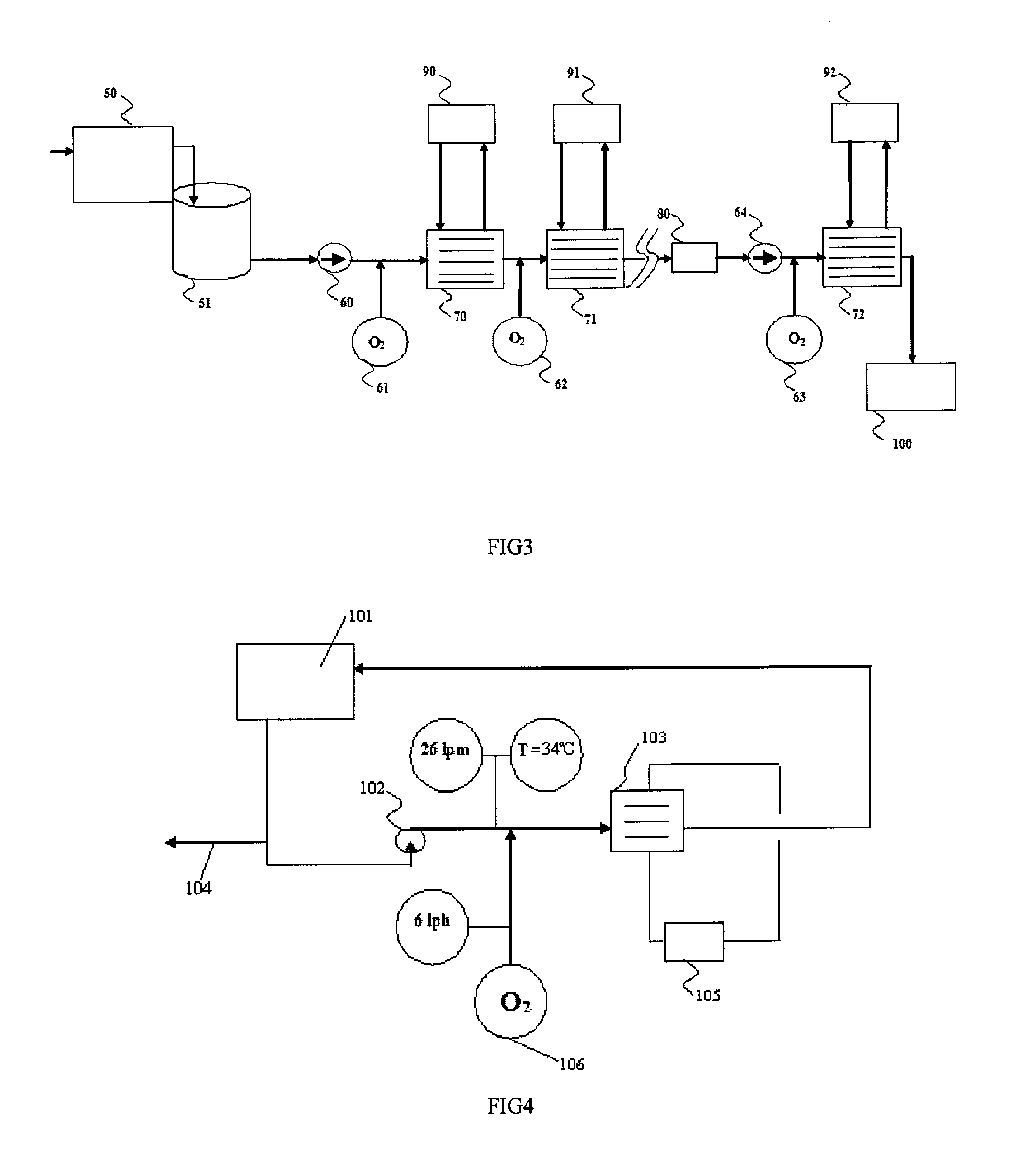Wastewater treatment process by electrochemical apparatus
a technology of electrochemical equipment and wastewater treatment, which is applied in the direction of chemistry equipment and processes, water/sewage treatment by oxidation, and the nature of treatment water, etc., can solve the problems of affecting the discharge limit, and affecting the discharge rate of biological waste water treatment processes
- Summary
- Abstract
- Description
- Claims
- Application Information
AI Technical Summary
Benefits of technology
Problems solved by technology
Method used
Image
Examples
example 2
[0044]In a second test a 10 liter volume of waste water with a conductivity of 58 mS / cm and a NH4—N concentration of 13,600 mg / l was circulated through the cell. The re-circulating flowrate was 26 lpm and oxygen was injected at a rate of 6 lph. The water was treated over several hours until the NH4—N concentration was reduced to zero, during which time the total charge passed through the electrodes in the cell was 932,571 Coulombs. The power applied to the electrochemical cell had the profile as shown in FIG. 2.
[0045]The exemplary results of such testing, and in particular the destruction of the undesirable solutes to a concentration that could not be determined analytically using commonly used analysis techniques, as well as the lower than would be expected, when compared with other prior art electrochemical processes, amount of energy used demonstrates the efficacy of this novel process.
[0046]The novel wastewater treatment process described herein can be practiced in many differen...
PUM
| Property | Measurement | Unit |
|---|---|---|
| anodic potential | aaaaa | aaaaa |
| anodic potential | aaaaa | aaaaa |
| anodic potential | aaaaa | aaaaa |
Abstract
Description
Claims
Application Information
 Login to View More
Login to View More - R&D
- Intellectual Property
- Life Sciences
- Materials
- Tech Scout
- Unparalleled Data Quality
- Higher Quality Content
- 60% Fewer Hallucinations
Browse by: Latest US Patents, China's latest patents, Technical Efficacy Thesaurus, Application Domain, Technology Topic, Popular Technical Reports.
© 2025 PatSnap. All rights reserved.Legal|Privacy policy|Modern Slavery Act Transparency Statement|Sitemap|About US| Contact US: help@patsnap.com



